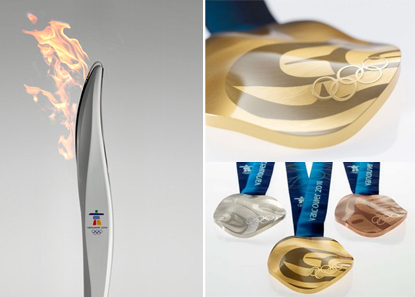
Vancouver (Canada) - The 2010 Winter Olympic Games, in Vancouver, Canada, had commissioned Bombardier, a company known worldwide for leading innovations in transportation and aerospace, to create the Olympic torch, a design that would need to withstand Canada's cold winter temperatures. For the Olympic medals, they were commissioned to the Royal Canadian Mint and Teck Resources Limited, a joint effort that would create the most unique medals to date.
Bombardier assembled a design team and their vast knowledge of industrial design to create an Olympic torch, an object with many constraints, that would be versatile, durable and adaptable. According to the official 2010 Vancouver Olympic Games' website, there were many elements to take into consideration:
Must be able to be handled by people of all ages and sizes
Must be easy to transfer the flame between torches
Must burn for at least 12 to 15 minutes
Burner must produce a visible flame in all weather conditions
Must be adaptable to attach or fix to alternative modes of transportation
Must be able to be manufactured in high quantities so each Olympic Torchbearer may purchase their torch as a commemorative keepsake
The result was the creation of an aluminum core torch, with a stainless steel double-burner system that will keep the flame operational in -50° Celsius to +40° Celsius. Its weight of 3.5 pounds/ 1.5 kilograms is light enough to be carried by most people.
Metal for Medal
The Royal Canadian Mint's and Teck Resources Limited's two-year project on creating the 615 Olympic medals (along with 399 Paralympic medals) would involve the collaboration between Aboriginal designer/artist, Corinne Hunt, and internationally renowned industrial designer, Omer Arbel. The medals are among the heaviest, weighing between 500 grams to 576 grams.
Teck Resources Limited provided special recycled materials for the medals - old cathode ray tube glass, computers parts and circuit boards through smelting. A process that shreds, melts and combines the electronic components to create a by-product used in the medal making process.
Due to Arbel's extensive knowledge in materials and fabrication processes, the medals took a distinctive undulating design, a shape achieved by striking the medal nine times during the 30-step medal process.
The artistic designs for the medals were created by Corinne Hunt, of Komoyue and Tlingit heritage, based on the orca and the raven, for the Olympics and Paralympics respectively. The designs were hand cropped to ensure that no medal was the same.